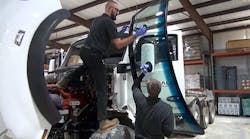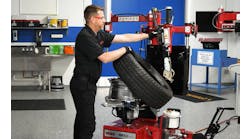Vehicle service professionals know a thing or two about cuts, scrapes, crushing and vibration injuries. Although, that minor cut or broken fingernail may or may not have been enough to push them into a good pair of work gloves.
According to the latest data from the National Safety Council, the average hand injury costs $21,918 (indemnity plus medical). The most recent report from the Bureau of Labor Statistics states a full 25.3 percent of all work-related injuries resulting in days away from work were hand related.
Hand-related injuries are second to back injuries.
For many, hand protection is hindering, and in many instances, overlooked. But for those that work with their hands long enough, they’re bound to have taken some licks.
Truth is, reducing the daily impact hands take when performing certain tasks can protect joints from excessive wear, reduce exposure to harsh chemicals and prevent blistering, cuts, impact and crushing injuries, and in extreme cases, prevent a person from being aesthetically disfigured.
IMPROVEMENTS IN GLOVE TECHNOLOGY
Glove technology has come a long way with major improvements to fit, feel and functionality, and the amelioration of high-performance materials and manufacturing processes is leading the way.
Manufacturers such as, Mechanix Wear, are working with a variety of fabrics and protective materials to improve durability and performance of task-specific hand protection. The days of the “one size fits all” work glove are over.
Vehicle service professionals now have options when it comes to protecting their hands, whether they are diving into an engine, repairing braking systems, working on trailer refrigeration units, changing fluids, performing wheel balancing, doing electrical work, carrying out axle repairs; and the list goes on and on.
For the technician, it is important to be conscious of the hazards that are present when considering a task-specific work glove.
Gloves designed for vehicle repair and maintenance work demand impact protection on the top of the hand, palm padding to reduce blisters and hand fatigue when wrenching, textured grip for handling tools, fingertip reinforcement, a snug fit for optimum comfort and dexterity, high abrasion resistant materials, heat resistance and chemical resistant when changing oil and other fluids.
Such features will not only protect the technician’s hand, but will improve overall work performance by enabling the technician to work with more power and control.
Those who’ve experienced a hand injury – no matter how big or small, know that it can be extremely hindering. As they say: “Safety doesn’t happen by accident.”
Cory Houston is the marketing manager for Mechanix Wear, a company that makes high-performance work gloves for automotive, racing, construction, the military, industrial, safety, gardening and home improvement (www.mechanix.com).



